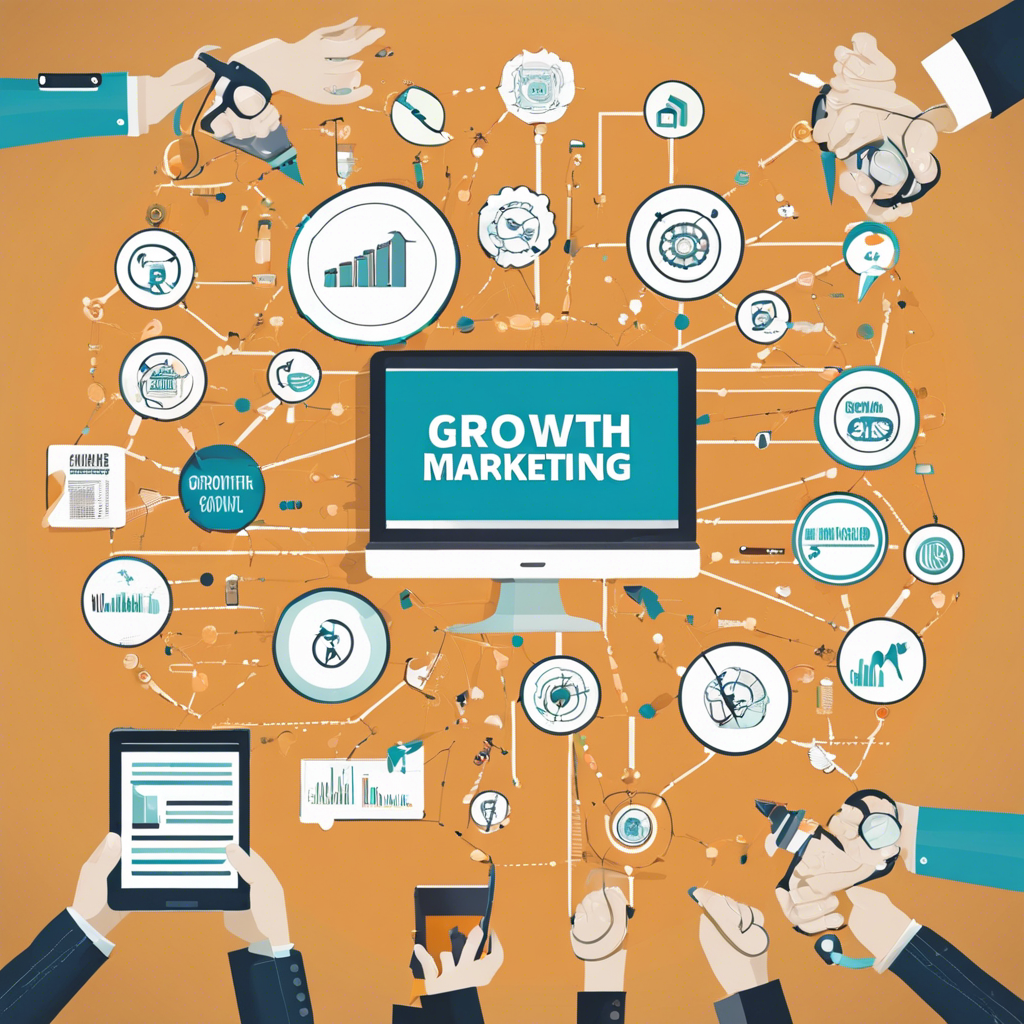As traditional marketing strategies make way for more dynamic and results-oriented approaches, growth marketing has risen as an innovative methodology that goes beyond the confines of conventional marketing by embracing data-driven and scientific techniques to fuel rapid revenue generation and business expansion.
Understanding Growth Marketing
At its core, growth marketing is a strategic evolution that integrates and identifies opportunities throughout the entire marketing and sales pipeline. Unlike traditional marketing, which often focuses on top-of-funnel activities to attract potential customers, growth marketing seizes every opportunity to acquire, convert, and retain customers, ultimately driving substantial and sustained growth.
The Shift in Focus
One of the fundamental differences with growth marketing lies in the re-envisioned role of marketing departments. Instead of solely generating leads, growth marketers prioritize creating a qualified pipeline with revenue as the overarching goal. This shift in focus not only aligns marketing teams more closely with sales departments but also contributes to cost reduction across the entire customer acquisition and retention process.
Data-Driven Decision Making
Growth marketing relies heavily on data-driven decision-making processes. By leveraging analytics and insights, marketers can identify high-impact strategies, optimize campaigns in real-time, and refine their approach based on measurable results. This scientific approach allows for continuous improvement, ensuring that marketing efforts are efficient and effective.
Customer-Centric Approach
In the realm of growth marketing, the customer takes center stage. Rather than concentrating solely on attracting new customers, growth marketers understand the importance of customer retention and lifetime value. This customer-centric approach aims to create long-lasting relationships, contributing not only to immediate revenue but also to sustained business growth over time.
Alignment with Sales Teams
A significant advantage of growth marketing is the alignment it fosters between marketing and sales teams. By sharing a common goal of revenue generation and focusing on a qualified pipeline, these departments collaborate more closely, breaking down silos and fostering a more unified organizational approach.
Effective in B2B Companies
Growth marketing has proven to be particularly effective in the B2B sector, especially in technology, medtech, and healthcare companies. The holistic and performance-driven strategy aligns well with the dynamic nature of these industries, where adaptability and innovation are key drivers of success. For B2B marketers, growth marketing principles provide a roadmap to navigate the intricacies of competitive and diverse landscapes and achieve substantial growth.
Growth Marketing Strategies
A growth marketing plan incorporates various strategies to drive rapid business expansion and revenue generation through data-driven and scientific approaches. Here are some common strategies often employed in a growth marketing plan:
- Data-Driven Decision Making: Growth marketing heavily relies on data analytics to inform and guide decision-making. Marketers use data to identify trends, customer behaviors, and areas for improvement, ensuring that every strategy is grounded in concrete information.
- Customer Segmentation: Understanding your audience is crucial in growth marketing. Marketers segment customers based on demographics, behaviors, and other relevant criteria. This segmentation allows for targeted and personalized marketing campaigns that resonate more effectively with specific customer groups.
- Conversion Rate Optimization: CRO involves optimizing various elements of your marketing channels to increase the likelihood of visitors taking desired actions, such as making a purchase or signing up for a newsletter. Continuous testing and refinement of landing pages, emails, and other touchpoints are key components of CRO.
- Content Marketing: Creating valuable and relevant content is essential for attracting and retaining customers. Growth marketers often leverage content marketing to establish authority in their industry, drive organic traffic, and nurture leads through the sales funnel.
- Social Media Marketing: Engaging with your audience on social media platforms is crucial for building brand awareness and fostering a community around your brand. Growth marketers use social media to distribute content, interact with customers, and gather insights into their preferences.
- Referral Programs: Encouraging existing customers to refer others is a powerful growth strategy. Referral programs incentivize customers to share their positive experiences, expanding your customer base through trusted recommendations.
- Email Marketing Automation: Automating email campaigns allows for personalized and timely communication with leads and customers. Nurture sequences, targeted promotions, and follow-up emails can be automated to guide prospects through the customer journey and encourage repeat business.
- Search Engine Optimization: Optimizing your online presence for search engines is crucial for organic growth. Effective SEO strategies involve keyword research, on-page optimization, and creating high-quality content that aligns with search engine algorithms.
- Paid Advertising: Paid advertising through channels like Google Ads, social media platforms, or other display networks can provide a quick boost to your visibility. Growth marketers use data analysis to optimize ad spend and target specific audiences to maximize ROI.
- A/B Testing: Experimentation is a fundamental aspect of growth marketing. A/B testing involves comparing two versions (A and B) of a webpage, email, or other marketing elements to determine which performs better. This iterative process helps refine strategies based on actual performance data.
- User Retention Strategies: While acquiring new customers is essential, retaining existing ones is equally important. Growth marketing plans often include strategies for customer loyalty, such as exclusive offers, personalized experiences, and ongoing communication.
Implementing these strategies within a cohesive growth marketing plan can help businesses not only attract new customers but also foster sustainable, long-term growth. Regular monitoring and adaptation based on performance metrics ensure that the plan remains effective in an ever-evolving market landscape.
Conclusion
As businesses navigate the complexities of a competitive market, growth marketing is emerging as a powerful catalyst for success. By embracing data-driven strategies, shifting focus towards revenue generation, and fostering collaboration between marketing and sales teams, growth marketing paves the way for sustained business expansion. In the era of dynamic markets and evolving consumer behavior, businesses that adopt growth marketing principles position themselves not only to thrive but to lead the way in their industries.

